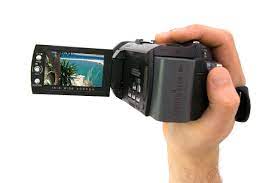Live streaming video is quickly becoming one of the most popular ways to broadcast video content around the world. Whether you’re a professional broadcaster looking to up your production level or a casual content creator looking to live stream your latest video project, having the right live-streaming camera is essential. Choosing the best live streaming video cameras can be a daunting task. With so many models on the market, each with its own unique features and benefits, it’s hard to know where to begin.
To help you make the best choice, this guide will provide you with the ultimate guide to selecting the best live streaming video cameras on the market. We’ll cover the different types of cameras available, the features you should look for, and the best cameras for different budgets. With the right knowledge, you’ll be able to find the perfect live streaming video camera to meet your needs. Check out this website https://www.razer.com/pc/streaming/kiyo-family for affordable streaming video cams.
- Understanding Video Compression
In addition to finding the right video camera, understanding video compression is also key to successful video production. Video compression is the process of reducing the amount of data required to represent a video stream, allowing video to take up less storage space and stream more quickly. This process is achieved through a variety of techniques, such as encoding, frame averaging, and resolution scaling. These techniques can be used to reduce the size of a video file without visibly affecting the quality of the footage.
- Low Latency Broadcasting
Low latency broadcasting allows for faster streaming of live video, reducing the delay from when an event occurs and when it is seen on screen. This makes streaming camera feeds a great choice for applications that require real-time feedback, such as interactive gaming, video conferencing, and remote-control systems.
- Camera’s Image Sensor
Live streaming video cameras are becoming increasingly popular for their ability to capture and transmit live footage in real-time. These cameras are equipped with an image sensor, which is a device that helps to convert an optical image into an electronic signal. This signal can then be seen and processed by a computer system.
The image sensor is typically composed of semiconductor material, such as silicon, and is designed to detect and convert light into digital signals. Image sensors have become a key component in digital cameras, allowing for higher image resolution and better image quality. Additionally, they are used in video cameras, allowing users to capture footage in real-time.
- Connectivity Options
In terms of connectivity options, live streaming video cameras typically offer a wide range of options. The most common option is a wired connection, such as via an Ethernet cable. This type of connection provides a fast, reliable connection and is suitable for longer distances. Alternatively, some models offer wireless connectivity, such as via Wi-Fi or Bluetooth.
- Live Streaming Capabilities
With a wide range of features, these cameras can easily be adapted to any situation and provide a reliable stream of content to the user’s audience. From broadcasting to webcasting and from sports events to conferences, these cameras are incredibly versatile and offer users an array of options for capturing their audience’s attention. With the ability to provide smooth, uninterrupted streaming of content, these cameras are an essential tool for anyone looking to create quality live streaming content.
























